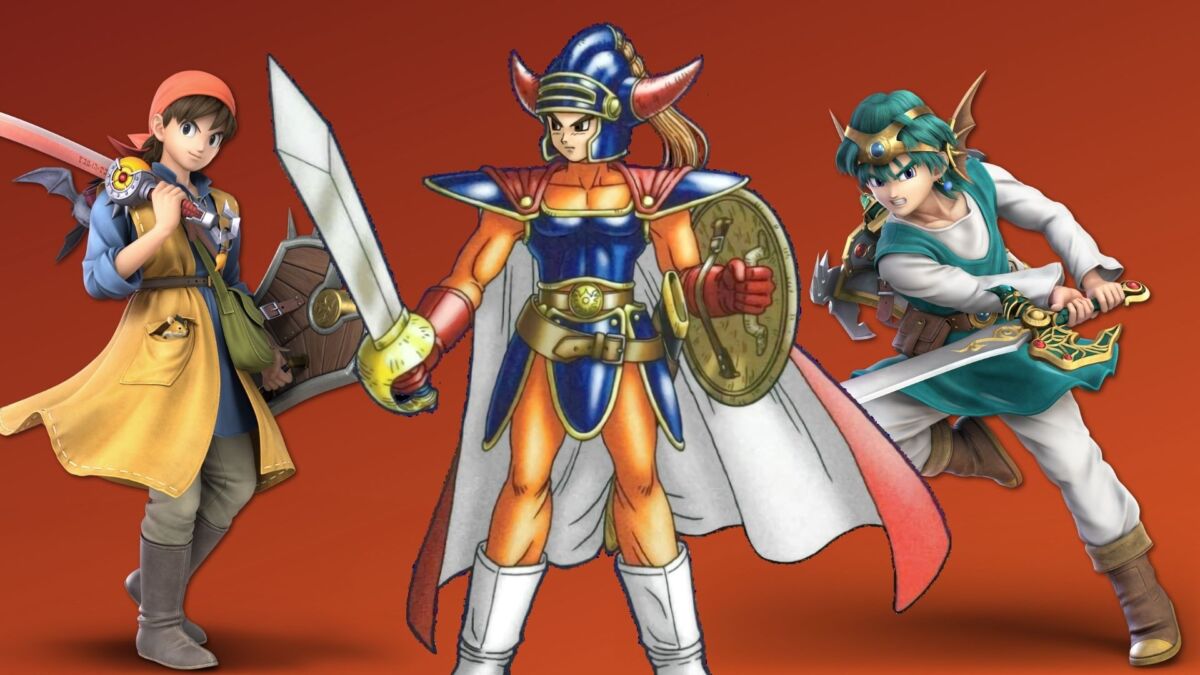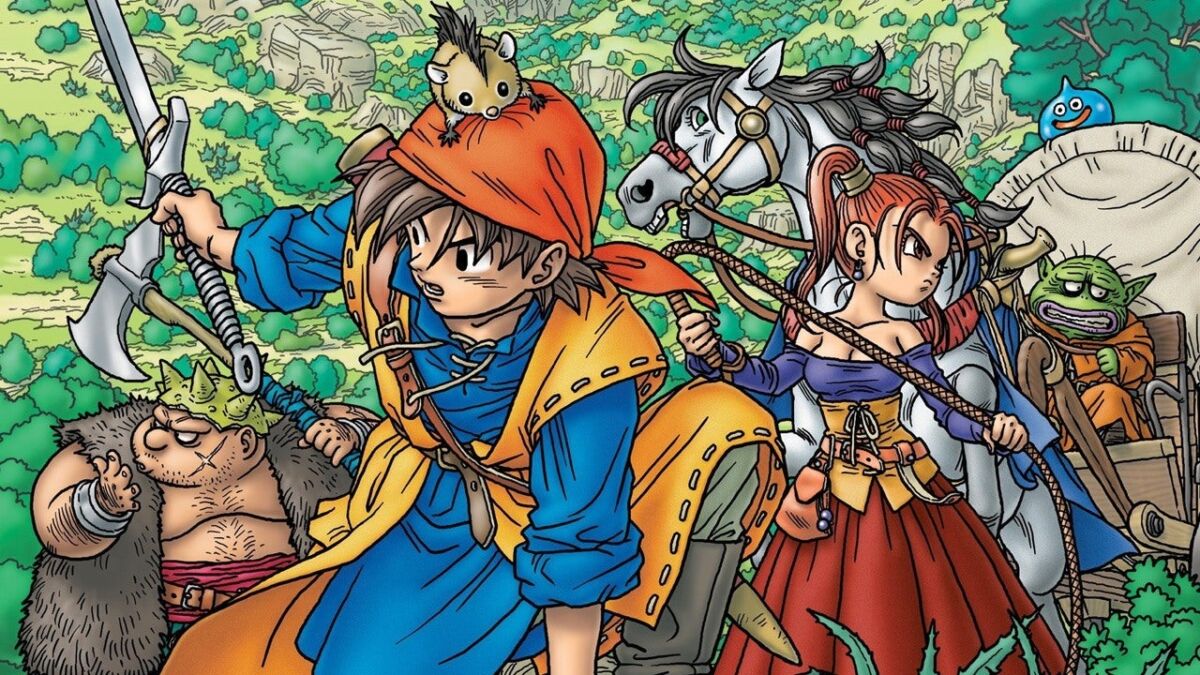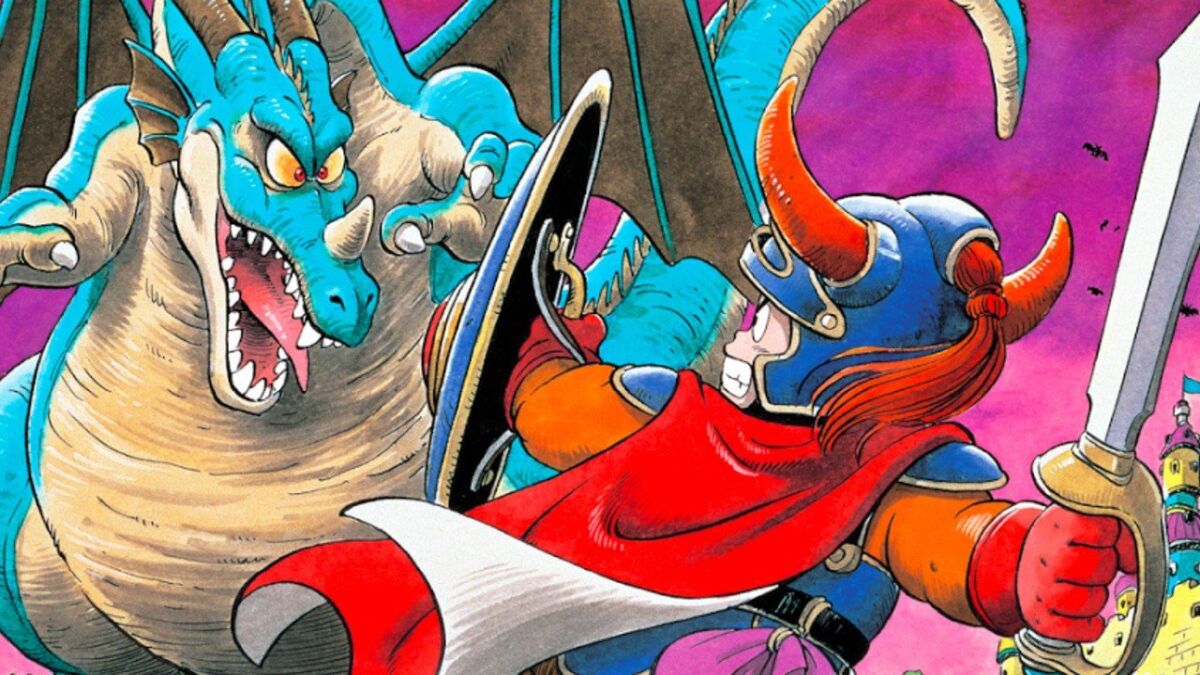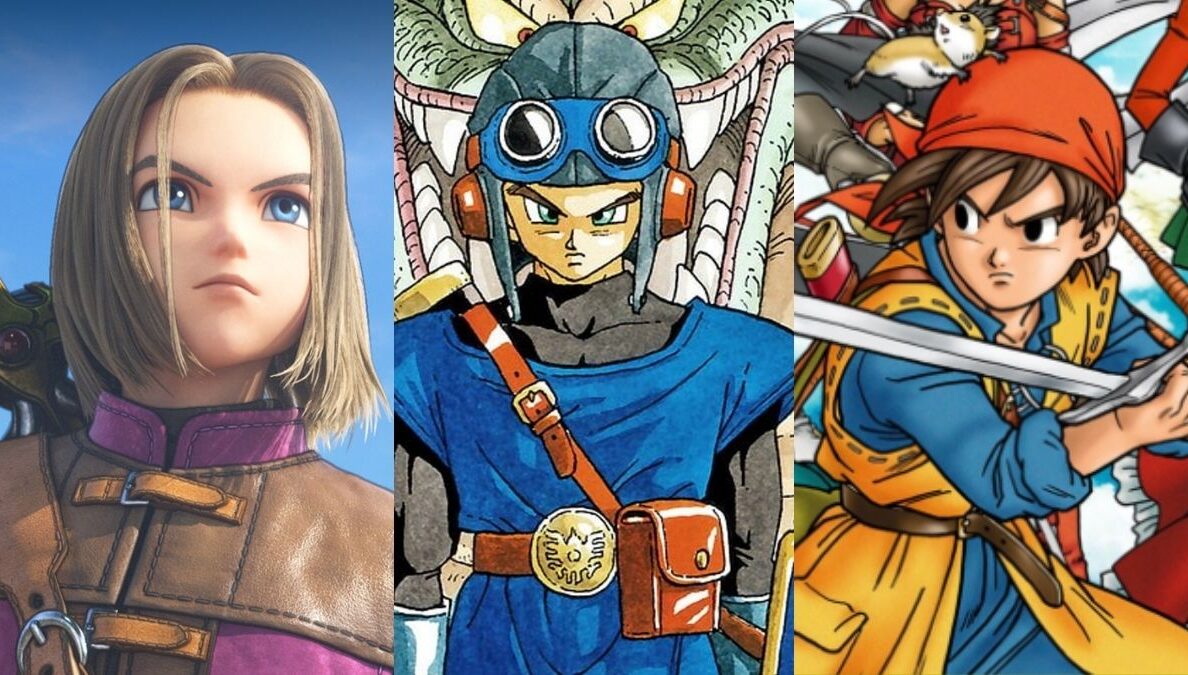JRPGs as a whole are one of the most intimidating genres in all of gaming. They can be notoriously long, extremely involved, come across very alien to most westerners culturally, have staunch gatekeeping fanbases, and can be hard to find and harder to understand. If someone wanted an easy gateway to perhaps getting into the genre, a great place to start is the series that helped create the entire genre: Dragon Quest.
The Dragon Quest series is one of the most important and influential franchises in all of video game history, but pales in worldwide popularity and accessibility to its counterpart JRPG series, Final Fantasy. While both are long-runners, Dragon Quest’s trouble with exports, softer themes and art, and interrupted translation schedules have always left it as the less inviting of the two, despite featuring character designs and artwork done by the creator of all things Dragon Ball, Akira Toriyama.
Toriyama’s art style perfectly compliments the fairytale, fun, fantastical feel that all the Dragon Quest games run on. It isn’t a series with complicated narratives or characters – if a character is evil, it’s not because they had a tragic backstory, but usually because they were just born evil. Most if not all the games revolve around restoring light and fending off forces of pure darkness, the easiest morality scale there is. The games have also stood by the turn-by-turn style of battle, making them much slower paced than many modern RPGs.
Beyond the first two games, every title in the series is entirely self-contained, meaning you don’t need to play them in any kind of order. In similar fashion to the Legend of Zelda or Fire Emblem’s respective releases, most of the games may have new characters and worlds, but keep certain ideas and assets and re-use them for every title to help with a unified, fantasy feel. Zelda’s Tri-Force and Master Sword and Fire Emblem’s, uh, Fire Emblem are up there with Dragon Quest’s Sword of Light and Slime monsters as legacy icons that have come to represent their franchises as a whole.
But if the franchise is so good and so fun and has lasted so long, how do you get into it?
With eleven numbered titles (and a twelfth on the way), countless spin-offs, and few games being available on modern consoles, the franchise isn’t the most accessible to newcomers, whether they be young gamers or veterans. But that’s why we’re here to break down the best places to try and get into a large, legendary series like Dragon Quest.
Dragon Quest Main Characters: There’s Only One
Hero

The Dragon Quest Hero is usually a young, often still teenaged, child of destiny that is tasked with saving the world while coming from humble beginnings. In some games, they are more customizable, but in others, they’re locked in.
In any case, the story and journey revolve around the Hero, who recruits many friends to their cause and helps any soul they come across, all while somehow never uttering a word – they’ve got the whole heroic mute thing going on. The Hero changes from game to game and usually has some of the most iconic outfits, weapons, and hair in the entire franchise.
The Dragon Quest Games You Should Play
Dragon Quest XI S: Echoes of an Elusive Age Definitive Edition: Long Name, Great Game

Dragon Quest XI S is not only the single most accessible and recent of all the DQ games, but it is insanely good in so many ways – most notably from a narrative perspective. The powerful and emotional, if lengthy, story is coupled with lovely gameplay, no matter your skill level.
The Hero of this tale goes by the title of The Luminary, who will one day rid the world of darkness. Unfortunately, there are some who see The Luminary as a bringer of darkness as well, forcing your Hero and the party you recruit to make their way around the world in search of a way to rid the world of evil and clear The Luminary’s name.
This title is undisputedly the best place to begin any foray into the Dragon Quest series. It is available on every major platform. While originally released as plain DQXI, the Definitive Edition is an upgraded version that is available on PC, PS4, Xbox One, and Switch, as well as being playable on PS5 and Xbox One Series X | S.
The game is a treat in the fact that the whole thing is a giant love letter to every previous entry in the franchise by relying on many of the tropes and mechanics that made it the JRPG bedrock it is, as well as having an entire area dedicated to visiting areas from the previous ten games in various “what if” type scenarios. There’s even a graphics option to make the game play as if it were one of the original 16-bit titles on the NES or the Game Boy ports.
With a big emphasis on the past, those who already love the franchise get everything they want in a celebration of what makes Dragon Quest the phenomenon it is. It also allows newcomers a chance to enjoy every single thing the franchise is and has always been about in an unapologetic fashion while also supplying a way to sort of get caught up on some of the lore. As mentioned, the games are entirely self-contained, but contain so much more if you’ve played previous entries. That said, there’s nothing preventing any player from just understanding the entry on it’s own.
Don’t let the long ass, somewhat nonsensical title scare you off – this is one of the most charming games ever. If you’re a fan of or willing to give a chance to the slower paced RPGs of old, it is a must-play for series veterans and the ideal place for franchise novices to begin their quest.
Dragon Quest III: The Most Legendary Game You’ve Never Played

If you’ve got a favorite JRPG, it likely exists because of this game.
Dragon Quest III is a game that has at least one recorded instance of someone playing it on the street and another avid gamer stealing it straight out of their Game Boy. It is why, to this day, the franchise has a tradition of Saturday releases because they don’t want kids skipping school to play them. It is, simply put, the game that solidified Dragon Quest’s place in the annals of gaming history both critically and commercially.
Dragon Quest III, modernly subtitled “The Seeds of Salvation,” is the finale of the original Dragon Quest trilogy, but you weren’t supposed to know that. However, given its legendary status and the fact that it’s thirty-five years old, it is usually packaged with the first two games and marketed as their prequel, which entirely spoils what was one of the biggest video game twists of all time. Also despite the legendary status, you’d be hard pressed to find anyone who beat this game all the way through in real life here in the west.
In this game, the Hero is the child of the renowned hero Ortega and is tasked with going on a journey on their 16th birthday. They must set off to do what your father couldn’t, namely kill the Dark Lord Baramos. But you can’t do it alone. You need a well-crafted party, with each member having a distinct class and stat spread – something revolutionary at the time of the original game’s release.
You’ll travel around a fantastical world that is actually analogous with our own planet and meticulously grind along a marvelous 50+ hour JRPG. Then, once you’ve ravaged darkness and avenged your father, the floor drops from underneath you and gives you one of the most iconic and, to this day, influential gaming moments ever by introducing an Act III and an even greater evil just when you thought you’d see credits.
Dragon Quest III was originally released on the NES in 1988 and 1992 in North America, but if you’re looking for actual ways to get your hands on a copy, the game was ported as “Dragon Warrior III” to the Game Boy Color in the west in 2001. If you’re not into paying collector’s prices, a version of the game is available digitally on the Nintendo Switch.
This version is a bit contested, however, as it’s a console port of a different port originally made for iOS back in 2014 that uses different assets than the originals. It was also recently announced that the game would be getting a “HD-2D” remaster made from the same engine as Octopath Traveler, so perhaps that will be the definitive edition to play in a few years.
All that said, the game is readily available on the Switch and is a delight if you have the patience to get through that old RPG thing of not ever knowing where to go, what to do next, and having no way of keeping track of it all.
It is important to note that virtually everything iconic about the game has been lifted, tweaked, and in some cases perfected by many other RPGs since its release, so it may be difficult to appreciate through a modern lens. In a vacuum, it is a must-play for any gaming enthusiast at least once. But in truth, it’s difficult to recommend as a truly great starting place for the series because for some, its magic might be lost because of its age.
Dragon Quest VIII: A Different Kind of Mushroom Kingdom

The first Dragon Quest title for PlayStation 2, to be in 3D, to ever be released in Europe, and to finally be named “Dragon Quest” in North America thanks to a copyright dispute, Dragon Quest VIII: Journey of the Cursed King laid a good bit of groundwork for DQ to have any real kind of success outside of Japan.
Because of exportation issues that would require an entire separate article on its own, Dragon Quest never reached the status in the west as it did at home, as it arrived here years behind games like Final Fantasy. Dragon Quest VIII helped soften that by being released only a year or so later in the west than in Japan while also being the first to have things like an orchestral soundtrack and voice acting. It also didn’t hurt that the original game for PS2 came with a demo of Final Fantasy XII.
This time around, the Hero is a young, unaffected guard of the Kingdom of Trodain. Unaffected by what, you ask? An evil wizard has put a spell on the kingdom, turning every single inhabitant, save the Hero, into plants, toads, and horses. It’s up to this young guard and the motley crew that side with him to save not only his kingdom, but eventually the world as a whole.
If the other Dragon Quest games feel huge in scope like gathering the best of the best to stop an Avengers-level threat, then this entry might feel more along the lines of Jessica Jones or Daredevil in that it starts off much smaller in scale than “you’re the chosen one, go save the whole world” when you’re really just trying to save your backyard.
Of course, it eventually becomes more, but it’s an excellent game that at least eases you into things. Being the standard for which all Dragon Quest games should aspire for when translated for western audiences doesn’t hurt either, as very little seems out of place or lost in the transition.
The trouble is, as with most games in the franchise, accessibility. The game originally came out on the PS2 in 2005, so good luck finding an affordable copy. The best way to get it is on the Nintendo 3DS, which got a remake that added several new features and party members. That said, it might be difficult to get a physical copy, but thankfully there is the Nintendo eShop.
It may be available on a ticking clock, though, as who knows when Nintendo will pull the plug on 3DS support. An excellent entry point into the series, definitely better than DQIII, but not nearly as widely available which dampens it’s reach for newcomers. If you have a 3DS, though, I highly recommend going this route if you don’t mind just owning it digitally.
Additionally, if you enjoy this game, the preceding game, Dragon Quest VII: Fragments of the Forgotten Past, is also available on the 3DS. Again, best to get it digitally. This one is hard to recommend to newcomers, however, because its plot is sort of convoluted and involves lots of jumping around with time travel that might put off people not already invested in the franchise.
Dragon Quest I & II: Bloody Are Those Who Break Down Doors

The ones that started it all, the first two Dragon Quest games were originally released back in 1986 and 1987. The first has you defending the Kingdom of Alfgard, while the second has the direct descendant of the first game’s Hero defending the world all over again from a new threat.
The games are, for better or worse, the most pared down versions of a JRPG you can find, mostly because the original Dragon Quest helped create the entire genre. They’re full of the fantastical magical realms that future games would make perfect, while also having predictably the roughest mechanics of the bunch. Examples include DQI having a level cap of 30 for your Hero and DQII introducing the entire function of party members to JRPGs, but not in the best or smoothest of ways.
The narrative of these first two that laid the groundwork for the entire genre is pretty minimal and mostly boils down to “solve this quest in this town, move on to next” while trying to make it to the big bad at the end while surviving the unforgiving world that is an early RPG. The dungeons of DQII are particularly infamous as being some of the most brutal of any game genre ever. To make up for any lack of narrative power, the games are absolute grindfests that most players of the modern times would likely lose patience with before they reach the second town.
While it was DQIII that blew the door off the hinges and established the franchise as one of the biggest and most important in video game history, its predecessors made their mark in their time, but are extremely difficult to play with fresh eyes today. They were released alongside DQIII on the Switch, giving them a huge new audience to sell itself to, but similarly to the third installment, they’re hardly the best choices for newcomers. But if you’re a perfectionist or a historian or if you just want bragging rights, they could offer some kind of value to today’s audience.
Simply put, if you want to make a true quest for yourself and run the gauntlet of the entirety of the Dragon Quest games, there’s literally no better place to start.
READ NEXT: Where To Start With Vampire: The Masquerade – A Beginner’s Guide To V:TM
Some of the coverage you find on Cultured Vultures contains affiliate links, which provide us with small commissions based on purchases made from visiting our site.

